AMYL FORMATE
- CAS NO.:638-49-3
- Empirical Formula: C6H12O2
- Molecular Weight: 116.16
- MDL number: MFCD00040440
- EINECS: 211-340-6
- SAFETY DATA SHEET (SDS)
- Update Date: 2023-11-28 16:31:44

What is AMYL FORMATE?
Chemical properties
Colorless liquid composed of a mixture of isomeric amyl formates with isoamyl formate in predominance. Plum-like odor. Less odoriferous and more active solvent than amyl acetate. It also has both a lower boiling point and a higher rate of evaporation. Miscible with oils, hydrocarbons, alcohols, ketones; slightly soluble in water.
Chemical properties
Amyl formate has a fruit-like aroma
Occurrence
Identified in apple, strawberry, tomato, fried cured pork, cognac, honey and Pyrus malus
The Uses of AMYL FORMATE
Solvent for cellulose esters, resins; solvent mixtures; films and coatings; perfume for leather; flavoring.
Preparation
From n-amyl alcohol and formic acid in the presence of H2SO4
Definition
ChEBI: Pentyl formate is a carboxylic ester.
General Description
A clear colorless liquid with a plum-like odor. Flash point 79°F. Less dense than water and insoluble in water. Vapors are heavier than air.
Air & Water Reactions
Highly flammable. Insoluble in water.
Reactivity Profile
AMYL FORMATE is an ester. Esters react with acids to liberate heat along with alcohols and acids. Strong oxidizing acids may cause a vigorous reaction that is sufficiently exothermic to ignite the reaction products. Heat is also generated by the interaction of esters with caustic solutions. Flammable hydrogen is generated by mixing esters with alkali metals and hydrides.
Hazard
Flammable, dangerous fire risk. Toxic by ingestion and inhalation.
Health Hazard
May cause toxic effects if inhaled or absorbed through skin. Inhalation or contact with material may irritate or burn skin and eyes. Fire will produce irritating, corrosive and/or toxic gases. Vapors may cause dizziness or suffocation. Runoff from fire control or dilution water may cause pollution.
Fire Hazard
HIGHLY FLAMMABLE: Will be easily ignited by heat, sparks or flames. Vapors may form explosive mixtures with air. Vapors may travel to source of ignition and flash back. Most vapors are heavier than air. They will spread along ground and collect in low or confined areas (sewers, basements, tanks). Vapor explosion hazard indoors, outdoors or in sewers. Runoff to sewer may create fire or explosion hazard. Containers may explode when heated. Many liquids are lighter than water.
Flammability and Explosibility
Flammable
Safety Profile
Very low toxicity by several routes. A skin irritant. See also ESTERS. Dangerously flammable; reacts vigorously with heat, flame, oxidizing materials. To fight fire, use foam, Co2, dry chemical.
Properties of AMYL FORMATE
| Melting point: | -73.5℃ |
| Boiling point: | 132 °C (lit.) |
| Density | 0.884 g/mL at 25 °C (lit.) |
| vapor pressure | 70 hPa (50 °C) |
| FEMA | 2068 | AMYL FORMATE |
| refractive index | n |
| Flash point: | 83 °F |
| storage temp. | Store below +30°C. |
| form | clear liquid |
| color | Colorless to Almost colorless |
| Odor | at 10.00 % in dipropylene glycol. powerful ethereal fruity unrip banana green earthy |
| explosive limit | 1.7-10%(V) |
| Water Solubility | 2.904g/L(22 ºC) |
| JECFA Number | 119 |
| Dielectric constant | 6.5(20℃) |
| CAS DataBase Reference | 638-49-3(CAS DataBase Reference) |
| EPA Substance Registry System | Formic acid, pentyl ester (638-49-3) |
Safety information for AMYL FORMATE
| Signal word | Warning |
| Pictogram(s) |
 Flame Flammables GHS02  Exclamation Mark Irritant GHS07 |
| GHS Hazard Statements |
H226:Flammable liquids H319:Serious eye damage/eye irritation H335:Specific target organ toxicity, single exposure;Respiratory tract irritation |
| Precautionary Statement Codes |
P261:Avoid breathing dust/fume/gas/mist/vapours/spray. P305+P351+P338:IF IN EYES: Rinse cautiously with water for several minutes. Remove contact lenses, if present and easy to do. Continuerinsing. |
Computed Descriptors for AMYL FORMATE
AMYL FORMATE manufacturer
Silverline Chemicals
New Products
(S)-3-Aminobutanenitrile hydrochloride 4-Methylphenylacetic acid N-Boc-D-alaninol N-BOC-D/L-ALANINOL Tert-butyl bis(2-chloroethyl)carbamate 3-Morpholino-1-(4-nitrophenyl)-5,6-dihydropyridin- 2(1H)-one Furan-2,5-Dicarboxylic Acid Tropic acid S-2-CHLORO PROPIONIC ACID ETHYL ISOCYANOACETATE 2-Bromo-1,3-Bis(Dimethylamino)Trimethinium Hexafluorophosphate 4-IODO BENZOIC ACID 3-NITRO-2-METHYL ANILINE 1-(2,4-DICHLOROPHENYL) ETHANAMINE (2-Hydroxyphenyl)acetonitrile 4-Bromopyrazole 5,6-Dimethoxyindanone 2-(Cyanocyclohexyl)acetic acid 4-methoxy-3,5-dinitropyridine 1-(4-(aminomethyl)benzyl)urea hydrochloride 2-aminopropyl benzoate hydrochloride diethyl 2-(2-((tertbutoxycarbonyl)amino) ethyl)malonate tert-butyl 4- (ureidomethyl)benzylcarbamate Ethyl-2-chloro((4-methoxyphenyl)hydrazono)acetateRelated products of tetrahydrofuran
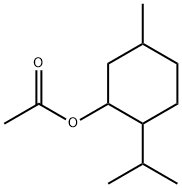


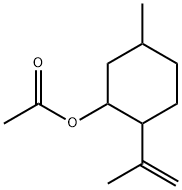
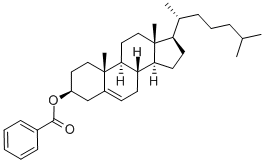
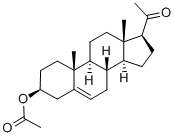
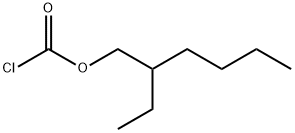
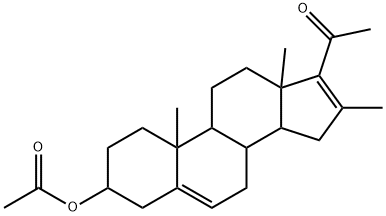
You may like
-
 638-49-3 Amyl formate 98%View Details
638-49-3 Amyl formate 98%View Details
638-49-3 -
 638-49-3 98%View Details
638-49-3 98%View Details
638-49-3 -
 Amyl formate CAS 638-49-3View Details
Amyl formate CAS 638-49-3View Details
638-49-3 -
 Amyl Formate CAS 638-49-3View Details
Amyl Formate CAS 638-49-3View Details
638-49-3 -
 Amyl Formate CAS 638-49-3View Details
Amyl Formate CAS 638-49-3View Details
638-49-3 -
 Amyl formate CAS 638-49-3View Details
Amyl formate CAS 638-49-3View Details
638-49-3 -
 14714-50-2 (2-Hydroxyphenyl)acetonitrile 98+View Details
14714-50-2 (2-Hydroxyphenyl)acetonitrile 98+View Details
14714-50-2 -
 118753-70-1 98+View Details
118753-70-1 98+View Details
118753-70-1